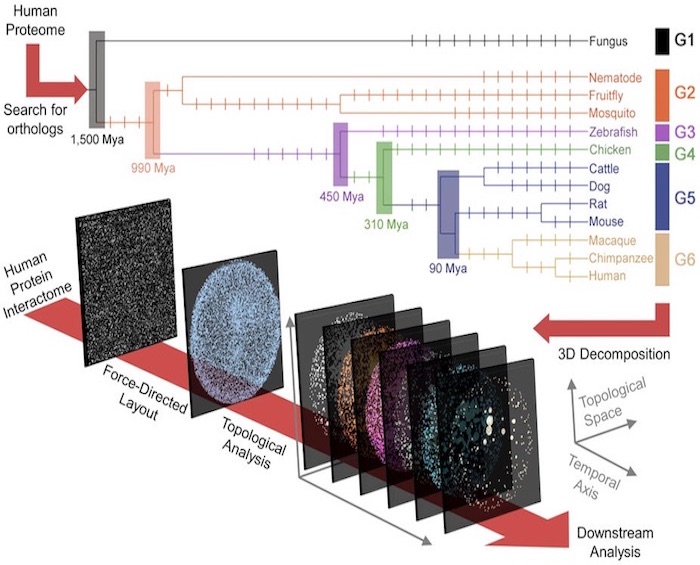



Proteins are important building blocks for living cells, which in terms builds up our lively human body. In order to study proteins in a more systematic way, biologists have formed a topological structure by considering the interaction between varying proteins. This is the protein-protein interaction network, or a protein graph using mathematical jargon. Just as different age group bahave differently in our society (e.g. elders tend to be more conservative, while adolescents are more impetuous), we propose to decompose this convoluted network into different age group; and study the graph structure under such decomposition.
But what is the age of a protein? In this work, we define protein age as it's evolutionary age, the time of it's debut into living species. This phylogenetic (or evolutionary in a simpler term) decomposition is shown in the top left picture. Using such decomposition, we found that the standard protein network evolution model is inconsistent with our result. Thus we proposed a modified evolution model, perturbation avoidance model, to explain this inconsistency. Furthermore, we also discovered that older proteins tend to situate not only at geographical center (as shown in the top right picture), but also at the topological center. For more detail, please refer to our publication.
Publication:
C.-Y. Chen, A. Ho, H.-Y. Huang, H.-F. Juan, H.-C. Huang. Dissecting the human protein-protein interaction network via phylogenetic decomposition, Scientific reports (2014).